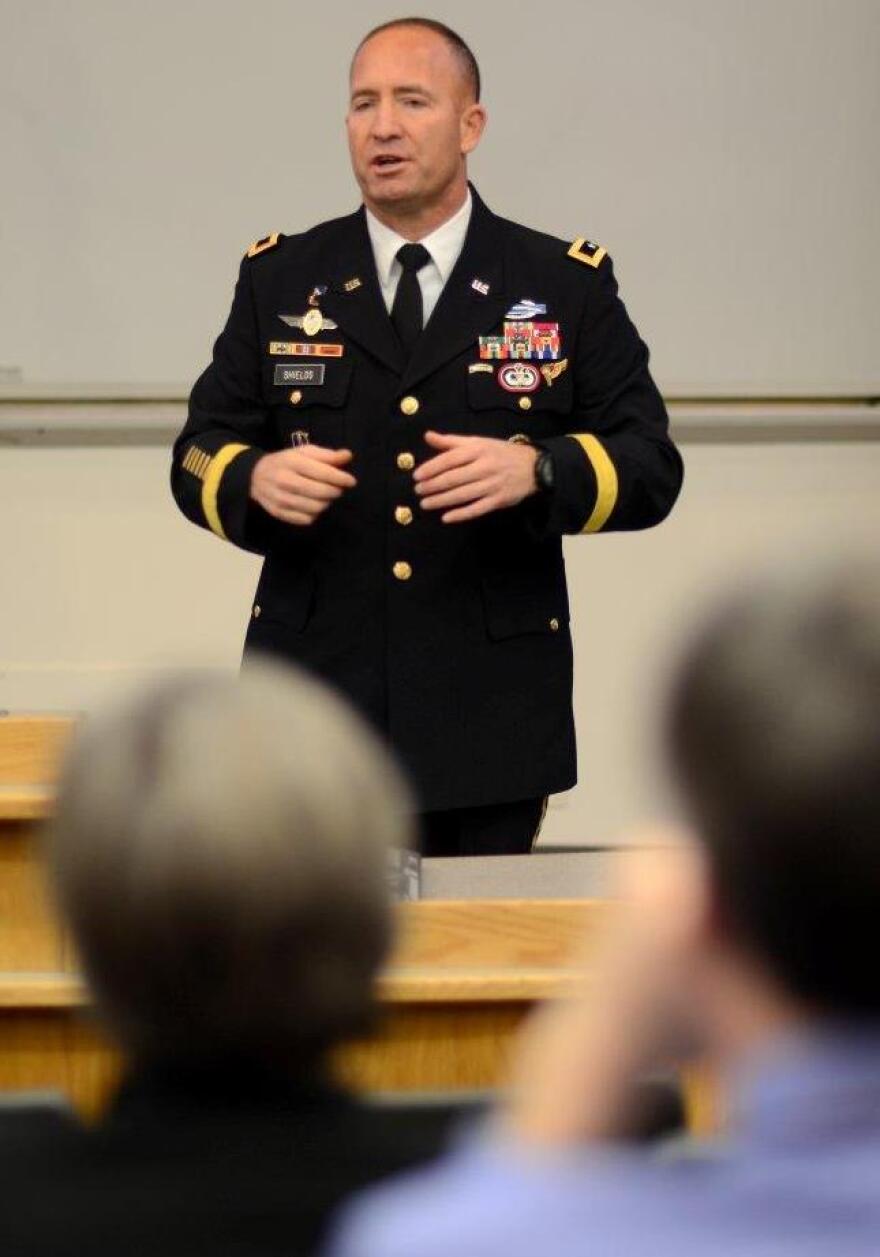The Army’s highest-ranking soldier in Alaska says the military trains here so it can operate in the Arctic, which he calls one of the world’s most difficult environments. And Major General Mike Shields says it’s becoming more complex with climate change.
Shields says the 12,000 U.S. Army-Alaska soldiers under his command train here so they can fight and win at 60 below. And then board a giant C-17 transport and fly across the world to fight in a jungle or desert.
That’s a complex mission. And Shields says it’s becoming more so with increased shipping and resource development in an Arctic that’s becoming ice-free due to climate change. And the military buildup by nations vying to protect their growing interests in the region.
He says it’s like playing on a multidimensional chessboard.
“I talk about three-dimensional chess, or four-dimensional chess, and I think that’s what we’re playing,” Shields said. “We see what’s going on with Russia. We see some of our Pacific neighbors vying for influence in Arctic. We see some of the Arctic Council countries and others and how they’re hedging and positioning and posturing and so forth. So it’s a complex piece. And as the ice melts and potential economic shipping routes open and so forth, it just becomes a bigger challenge.”
Shields says more cargo and passenger ships are likely to be passing along Alaska’s coasts in the years ahead. And he says that will create more demand for humanitarian and disaster-assistance from the military task force that includes U.S. Army-Alaska. He cited the lessons-learned from the Norwegian navy’s and coast guard’s rescue of 900 passengers aboard a cruise ship that hit sea ice and sank in Arctic waters north of Europe.
“Nine-hundred people – sounds like a lot,” he said. “But when you take a look at some of the ships that are parked at Whittier, Seward, and how they could grow in the future to be thousands. I mean, how do you manage a disaster of that magnitude in the Arctic?”
Shields gave his talk to a crowd on Thursday at the University of Alaska-Fairbanks during UAF’s Arctic Day 2014. The event was held to showcase the university’s Arctic research programs in the region and its collaboration in those endeavors with academic and governmental partners.
Shields says that research has helped the U.S. military and its allies and Arctic partners in many ways. Including participation in an environmental research program called the Arctic Collaborative Environment. It’s operated in conjunction with the university’s Arctic Region Supercomputing Center, and among things it tracks sea ice.
The supercomputing center helps federal agencies operating in the Arctic, including Joint Task Force-Alaska, or JTF-Alaska, and the Under-Secretary of Defense’s office of Acquisition of Technology and Logistics, or OSD-ATL. Shields says the university-military collaboration is helping agencies monitor activity in the region to attain a level of surveillance known as All-Domain Awareness.
“We work with the university, with the Arctic Collaborative Environment,” he said. “It’s in conjunction with NASA and OSD-ATL. From a JTF-Alaska perspective, we’re looking at how do we get All-Domain Awareness for the Arctic?”
Shields says All-Domain Awareness extends beyond the Arctic to space, and cyberspace.



